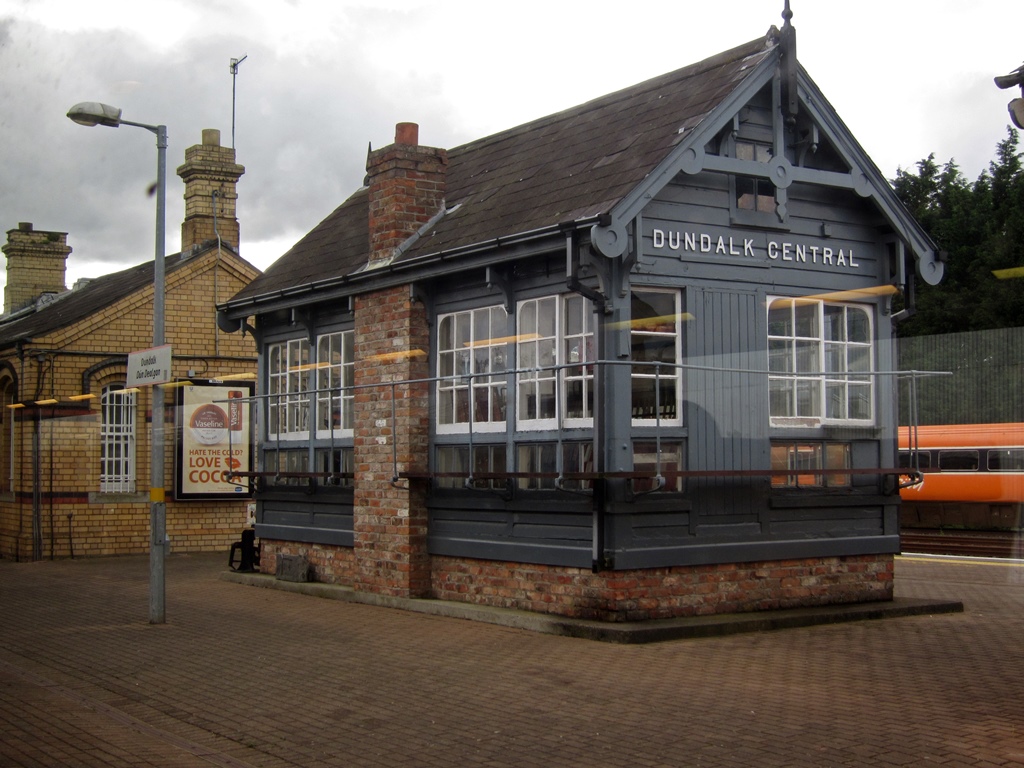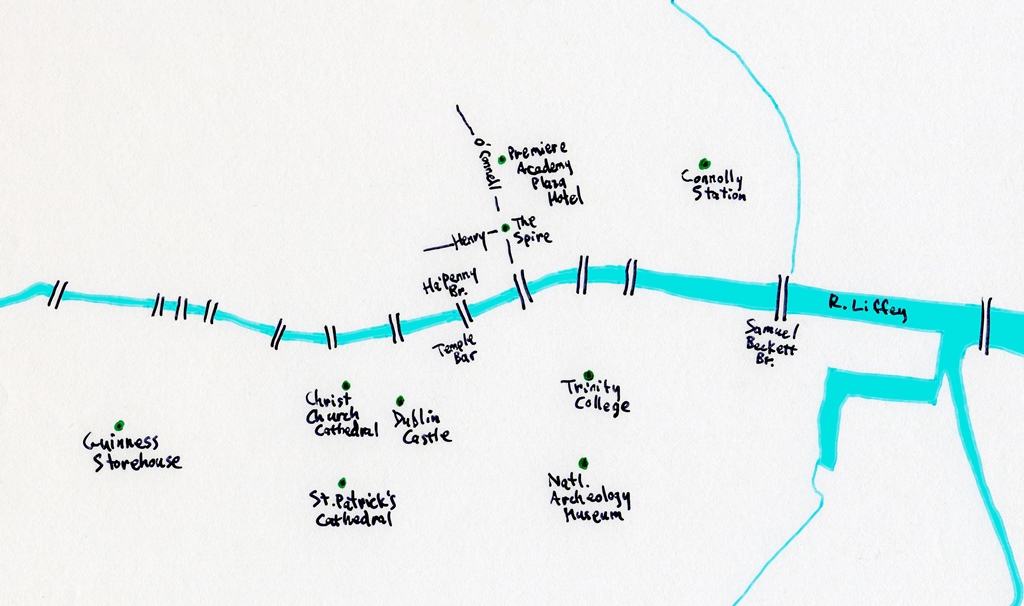Our train made its way southward through the rainy Irish afternoon, making
brief stops at a number of towns. One of the stops, Dundalk, impressed us
enough for a picture, and though we didn't know it at the time, also signaled
our reentry into the Republic of Ireland.
Dundalk Station (Republic of Ireland)
The Republic of Ireland: where they drink Guinness and good Irish whiskey
(well, they also do this in Northern Ireland), where they love a good fight
(ditto), where everyone eats Lucky Charms for breakfast (this last part could
be wrong – it's possible I've been misinformed; but they are magically
delicious), and where they spend euros. We stashed away our remaining pounds
to await our next visit to the United Kingdom, and hauled out our meager supply
of euros. Then we resumed our customary transit activities as the weather
cleared and the Irish countryside rolled by.
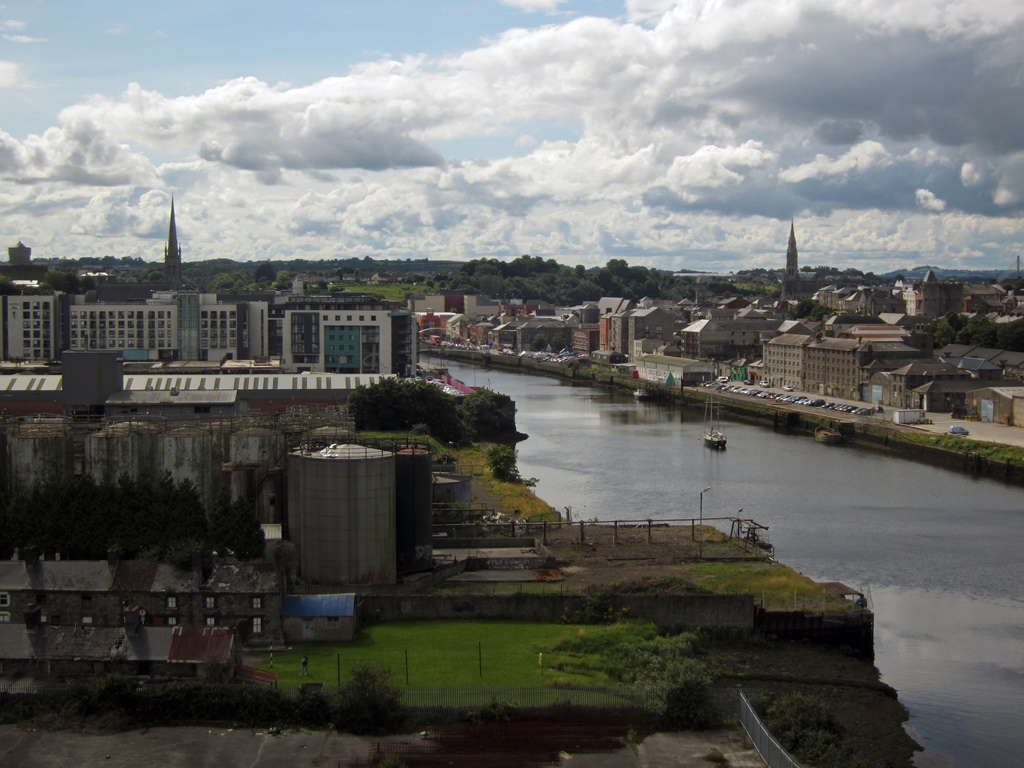
Drogheda and the River Boyne
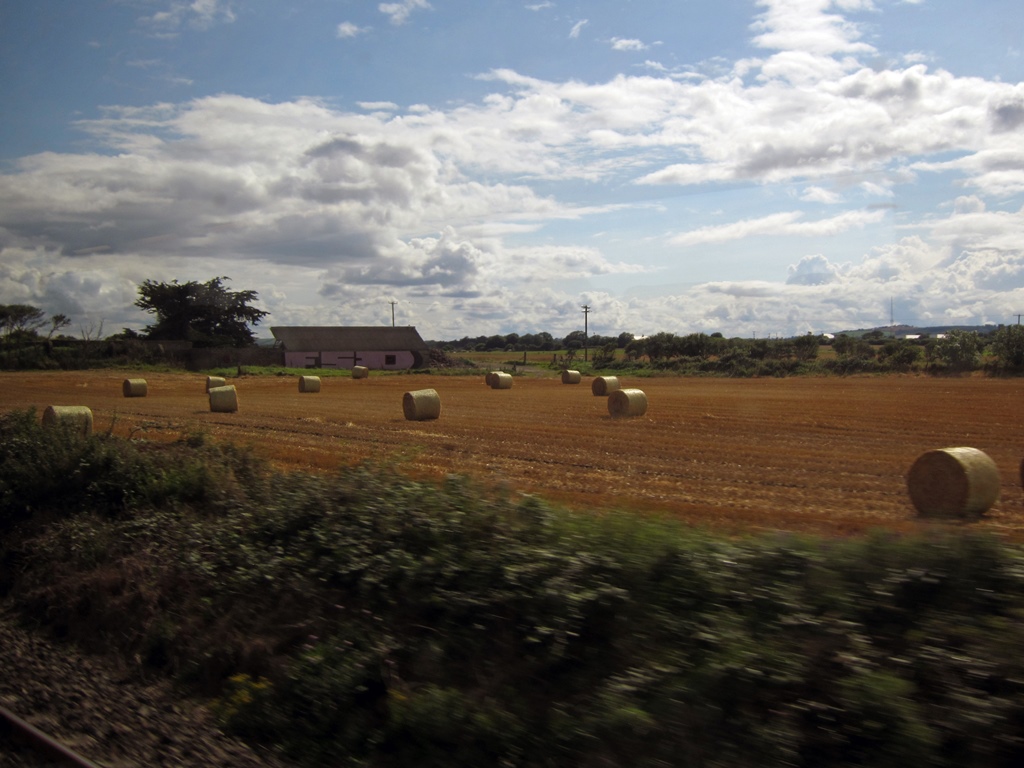
Field with Cylindrical Bales
Crossing the Broadmeadow Estuary
In due time we arrived at Dublin's Connolly station. Our hotel was about a
half-mile west of the station, and the weather had turned nice, so we
elected to walk, dragging our luggage behind us. In a little more due time
we arrived at the hotel, the
Best Western Academy Plaza,
located just off O'Connell Street, on a small road called Findlater Place.
Findlater is not a large street, but in front of the hotel it widens enough
to accommodate a center divider, on which a tiny church is parked (the
Church of St. George and St. Thomas;
it didn't appear to be open for business).
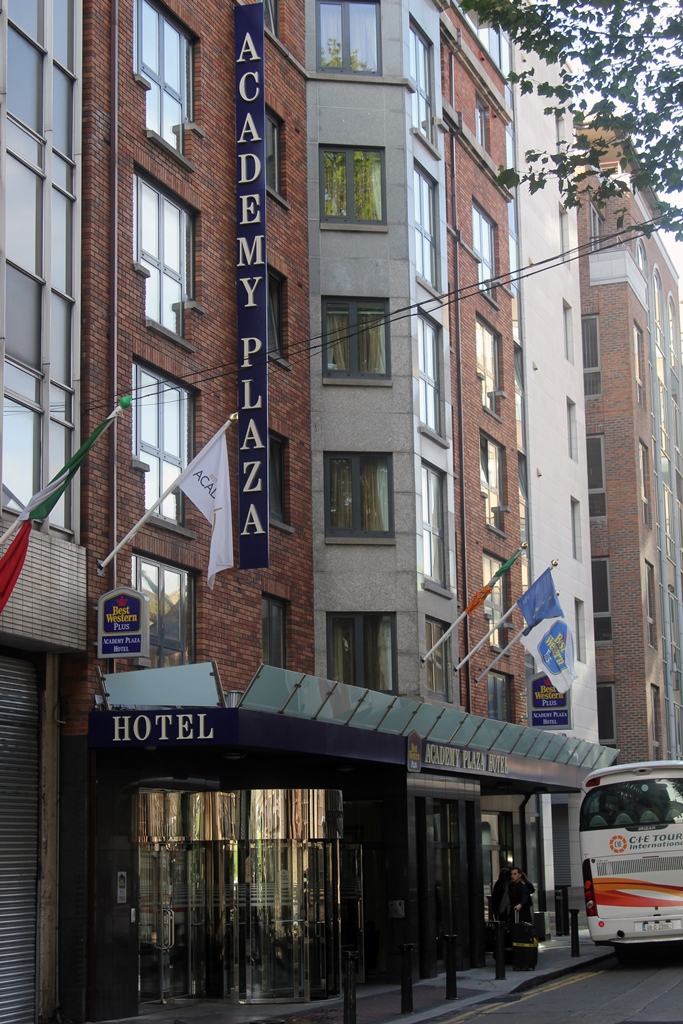
Best Western Academy Plaza Hotel
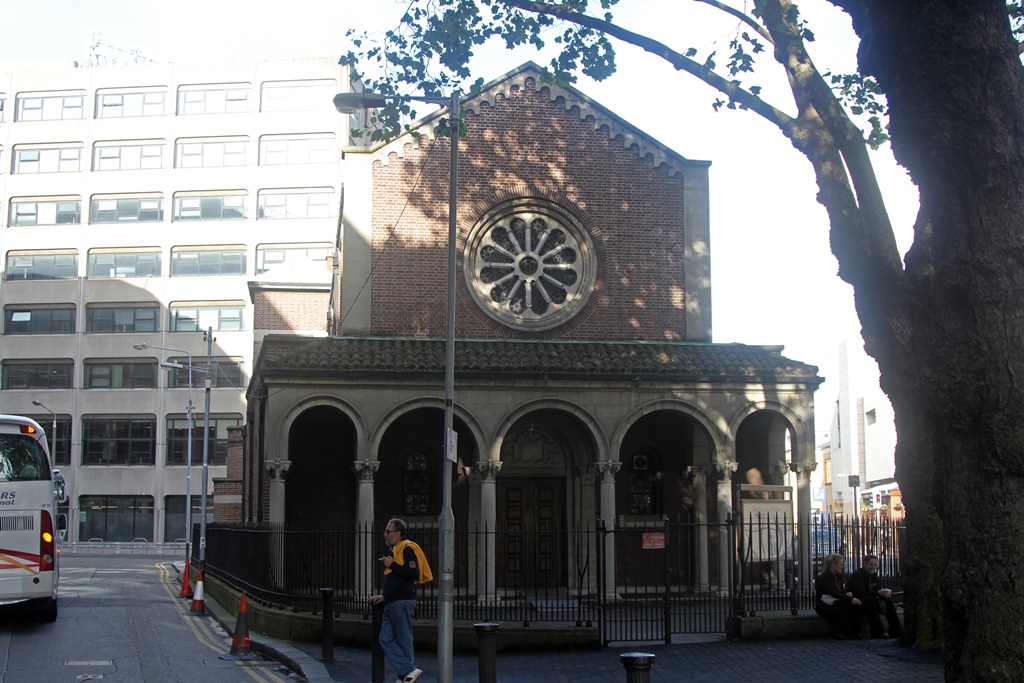
Church of St. George and St. Thomas
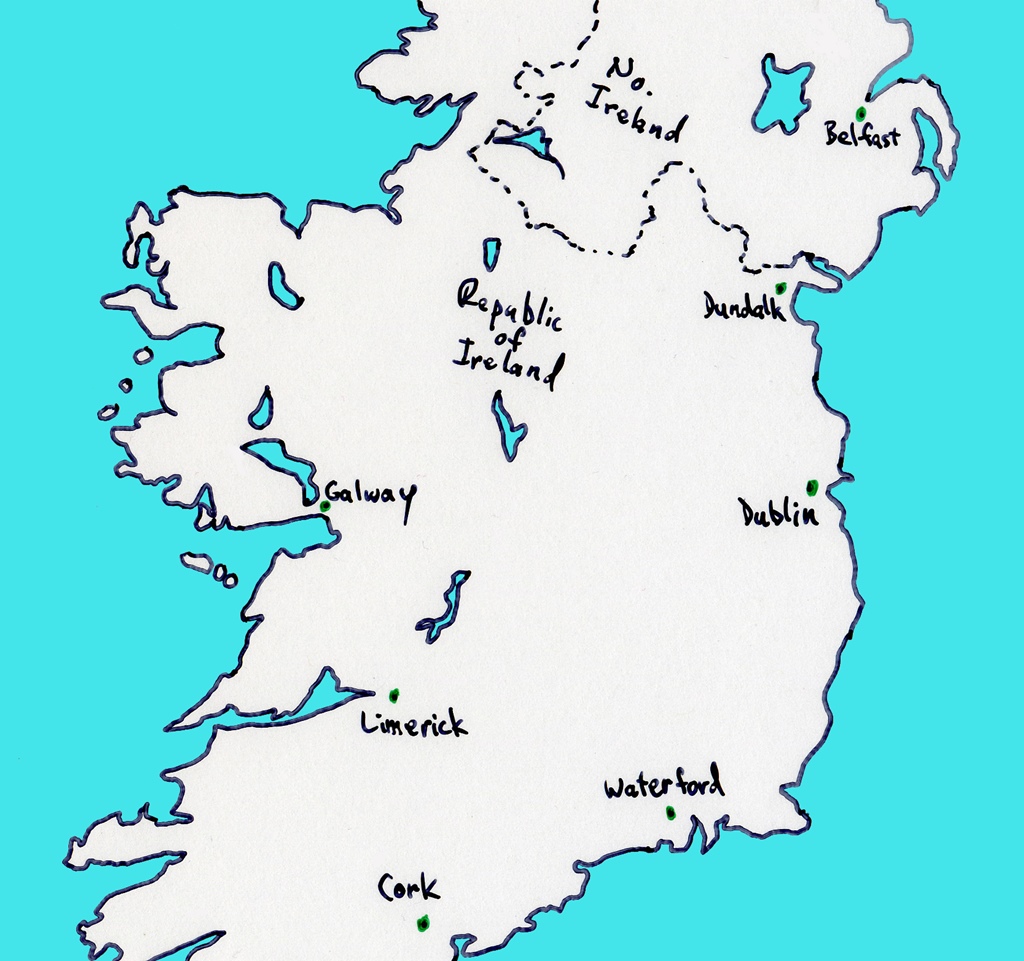
Ireland
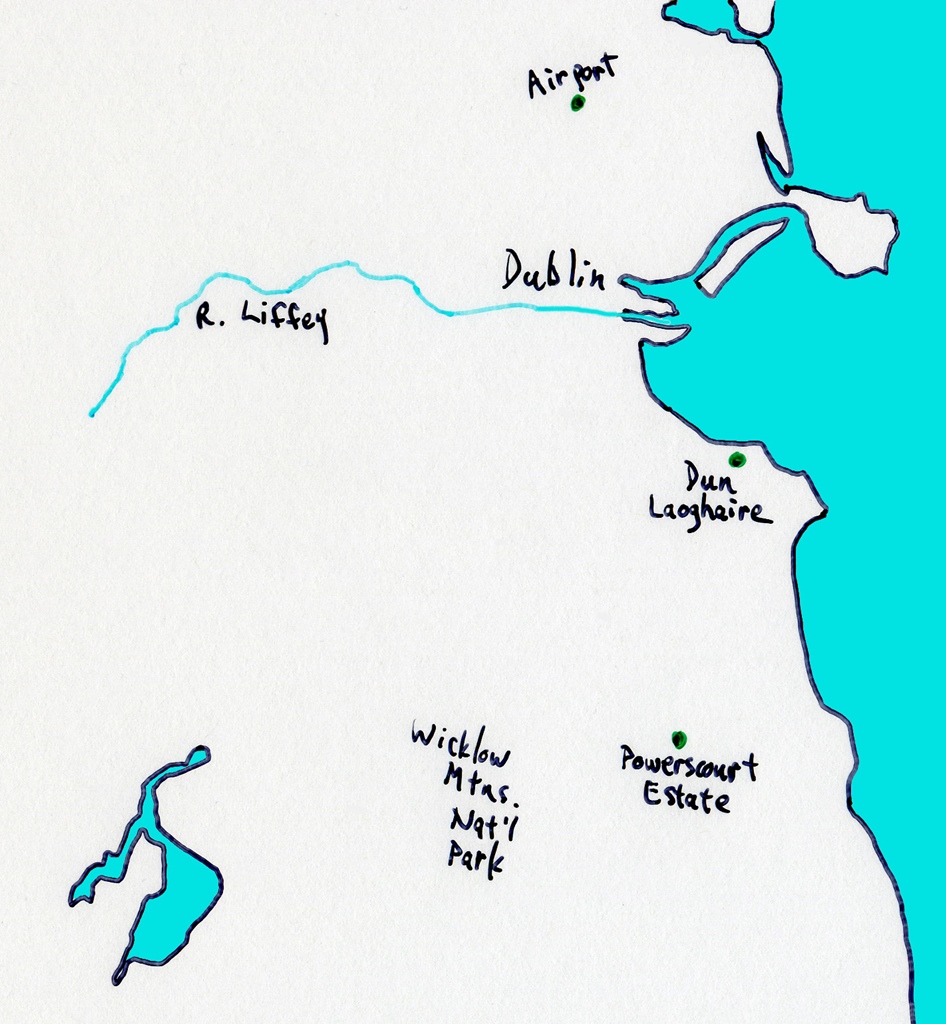
Dublin Area
Central Dublin
Dublin is the capital and largest city in Ireland, with a metropolitan area
population approaching two million. It's located about halfway down the
east coast of the island. It's split in two by the River Liffey, which flows
eastward through the city and empties into Dublin Bay. Traditionally, the
north side of the Liffey is inhabited by more working class people, while the
south side's occupants are of the more elite classes. As in most big cities
with rivers flowing through them, there are several bridges which cross the
river.
As one might expect, the city's main north-west thoroughfares cross bridges
when they hit the Liffey. This is true of O'Connell Street (named for 19th
Century nationalist Daniel O'Connell), Dublin's main thoroughfare and the
main street closest to our hotel. This street also has a large center
divider, along which trees and monuments are sited. There is a monument to
Mr. O'Connell just north of the O'Connell Street Bridge at the river, and
halfway up the street there is 393-foot stainless steel spire called the
Spire of Dublin (also known as the Monument of Light). The Spire was
completed in 2003, and like any grossly conspicuous piece of public art,
there are locals who love it and others who hate it. One would expect that
there were several creatively tasteless jokes going around when it was
unveiled. From a practical perspective, it would appear to be an additional
obstacle for airplanes to crash into, while also being a useful landmark
for aircraft that manage to avoid this fate.
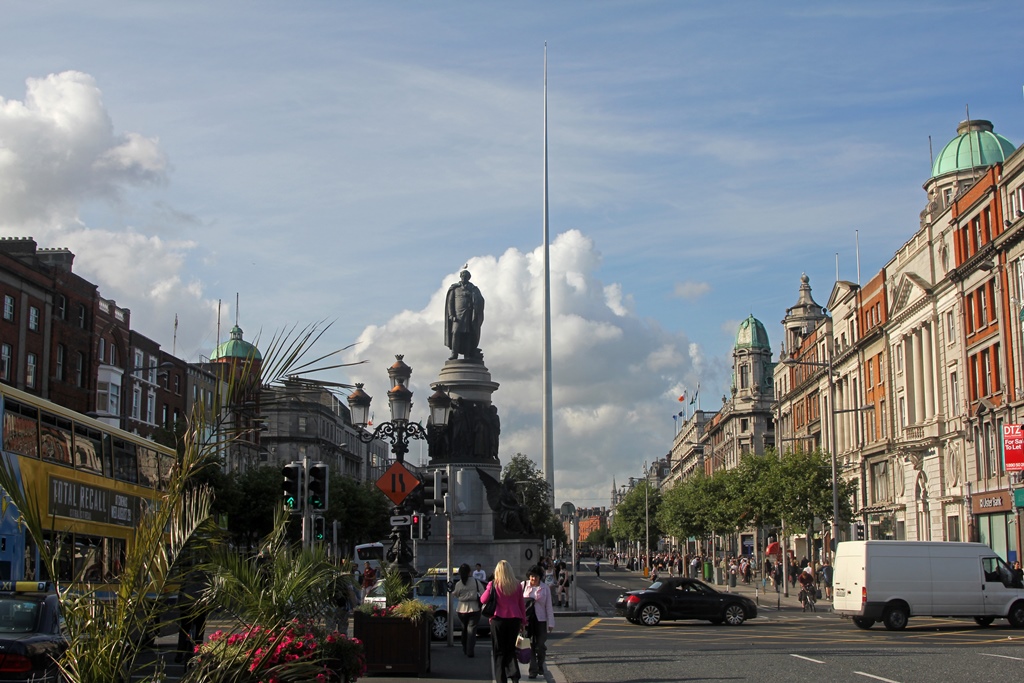
O'Connell Monument and Spire of Dublin
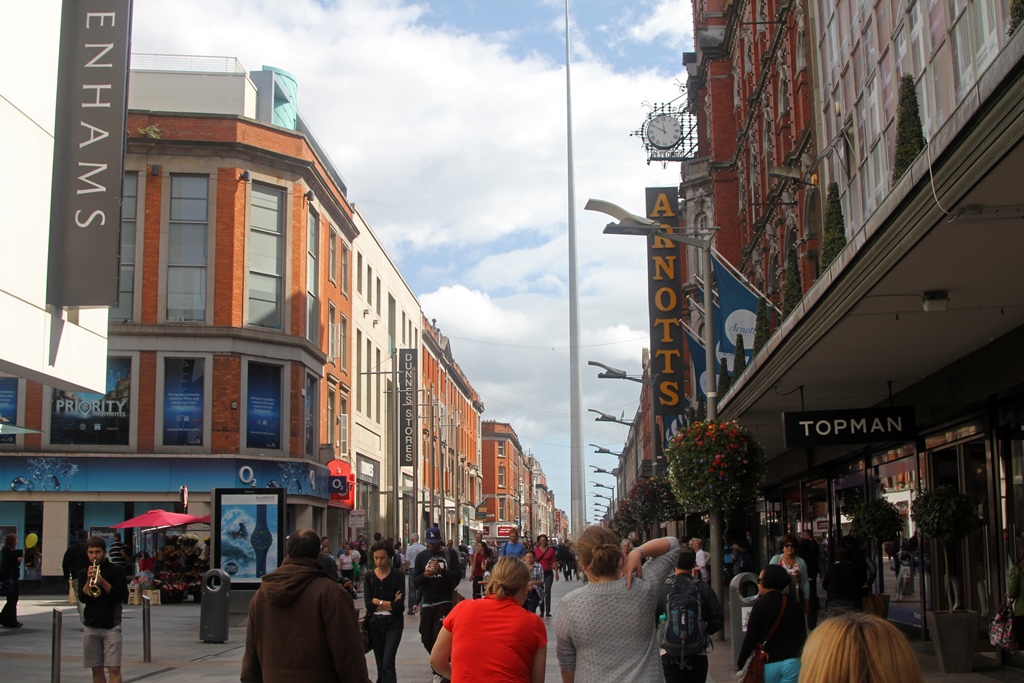
The Spire from Henry Street
Prior to construction of the Spire, a 134-foot tall monument called Nelson's
Pillar had stood on this spot from 1809 until 1966. This monument consisted
of a tall pillar and pedestal, surmounted by a statue of Horatio Nelson. The
pillar was hollow, and it was possible to climb an enclosed stairway to a viewing
platform below the statue. But in 1966 some IRA types planted a bomb which
destroyed the column. It's not clear whether they were offended by any of the
Admiral's exploits, or just by his celebrated Britishness. In any event, the
site remained essentially empty until the construction of the Spire.
After getting situated, we explored some of the immediate area (finding, for one
thing, an ATM that dispensed euros), ate dinner and returned to the hotel. Plans
for the next day were somewhat complicated, as Philip wanted to do some exploring
on his own. But for Nella and me, our first stop was to be Dublin Castle.

